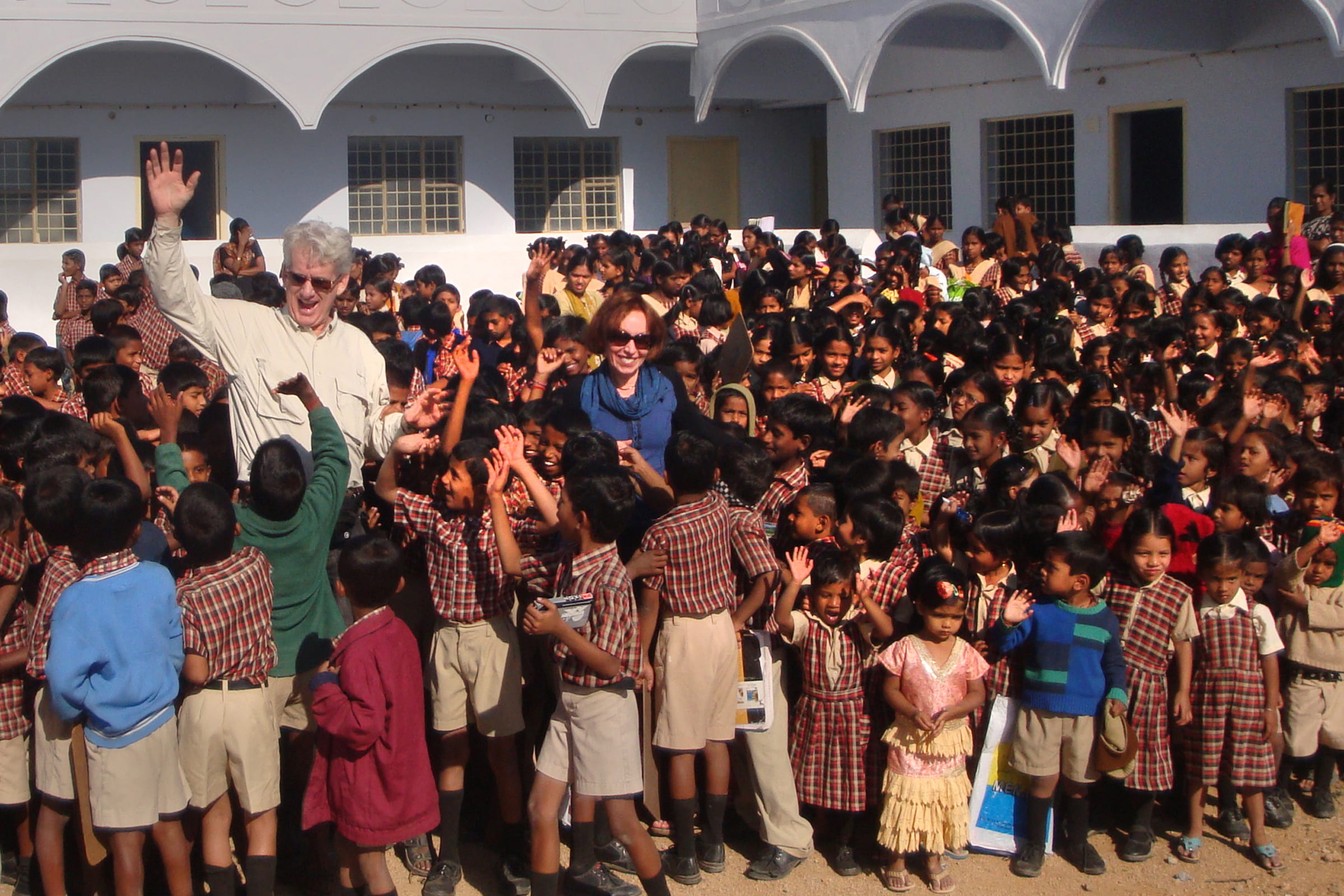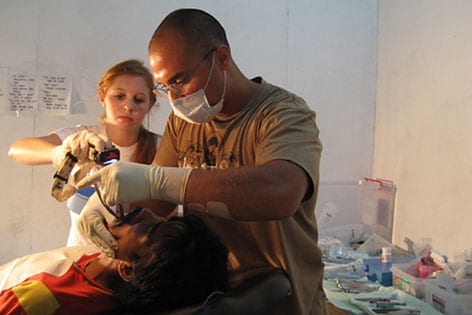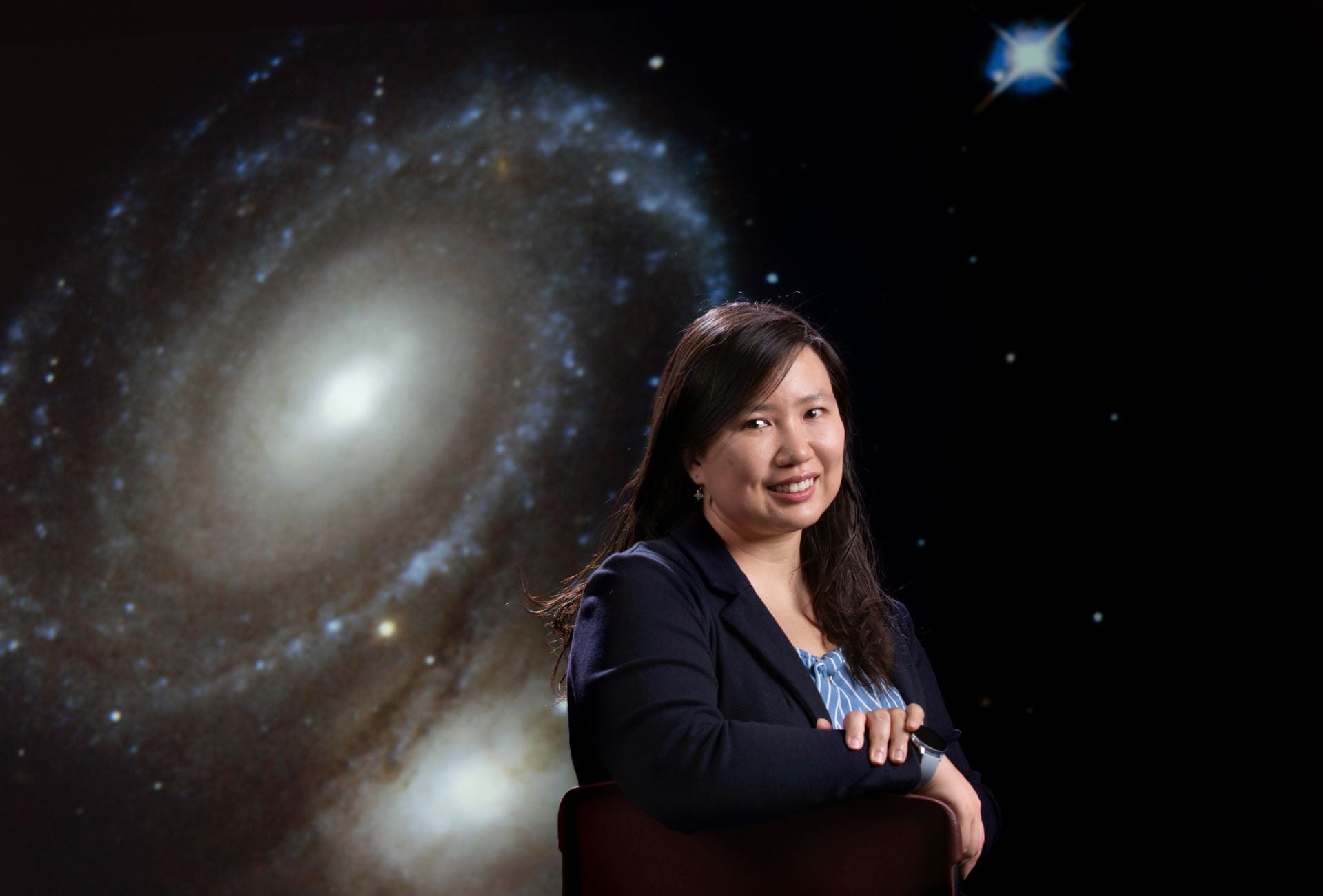Blueprint for hope

Compared to the hospitals, research labs, university buildings and other important structures Rebekah Gladson has designed as campus architect and associate vice chancellor of UC Irvine, an orphanage in India might seem like a small, insignificant project. Not to her.
For Gladson, whose visionary buildings have earned her the Design-Build Institute of America’s Brunelleschi Lifetime Achievement Award and election to The American Institute of Architects College of Fellows, the orphanage has become one of the most meaningful projects she’s undertaken in her 25-year career.
“When you work on a project like this, what’s most important in your life changes,” she says. “We have so much affluence, so much stuff, here in Orange County. But this pulls you back to what’s essential. It leaves you asking, ‘How can we make a difference?'”
Gladson and her husband, water and environmental engineer Paul Cooley, decided to try to make a difference in the lives of street children in India six years ago when they volunteered with Engineering Ministries International to build an orphanage and school in Hyderabad.
The project’s taken her far outside her comfort zone. Instead of a spacious air-conditioned office, she’s toiled in 115-degree heat while working at a rickety table set up in a cramped orphanage classroom. Instead of creating site plans on her computer using CAD software, she’s drawn them the old-fashioned way — with pencil and paper, often working by candlelight.
Instead of the army of contractors, engineers, landscape designers and other professionals she usually works with, there’s a small crew of eager college students from the U.S. who’ve volunteered to help and local laborers to construct the building.
“After we arrived at the orphanage to meet the other volunteers, Paul and I looked at each other and said, ‘Uh-oh, it’s just us.’ We were the only licensed professionals,” Gladson says. “But it’s turned into an amazing opportunity to not only serve but to teach. Paul has taught the engineering students to survey with primitive tools — a hand level and tape measure — and to perform simple water and soil testing. I’ve worked with the architecture students to carve out master plans for the site.”
Instead of overseeing multi-million dollar budgets, she’s relying on donations as small as $100. The school’s first phase was finished last fall and cost $300,000 — about $25 a square foot compared to $425-$450 per foot for the typical university project. Gladson hopes to complete the dormitory’s first phase by February 2012 for $325,000.
She and Cooley have undertaken much of the fundraising themselves, with the help of colleagues in the industry and UCI.
“One day, we were sitting with the orphanage founders, Mathew and Angel Meagher, and we asked them, ‘How are you going to fund this? What’s your plan?’ Even before I came to the university, I’d always worked on projects that had money,” Gladson says.
“They had no endowment. So we foolishly agreed to help with fundraising,” she says with a rueful laugh. “We came back to the U.S. and started telling people about the project.”
They make regular trips to the orphanage to oversee the building and to deliver funds. Laborers can only be paid in cash; contracts are often “written in Hindi on the back of envelopes,” Gladson notes.
Whenever she’s on the site, children gather round the red-haired American. They ask her if she remembers their name. They give her high-fives and touch her clothes. In her spare time, she’s taught them games like badminton.
“All of these kids just want to be loved,” she says. “They have no parents because there are a lot of accidents, disease and death. It’s not unusual for the father to have died. The woman can remarry, but she has to relinquish her children. Often, they’ll just be left on the street.”
Hyderabad’s current shelter can house only 200 orphans — a tiny fraction of the area’s estimated 50,000 homeless children. Gladson recalls a photograph she took of rows of orphans sitting on a concrete floor and eating rice from tin pie pans.
“They clean up the floor after the meal, put a mat down that’s the thickness of a sweater and sleep there at night — 40 to 80 children to a room,” she says. “Each child has a little lunchbox that contains everything they own in the world. They deserve so much better.”
The new facility will house 1,000 orphans, and the school will have 46 classrooms as well as science, library and computer labs to accommodate 3,000 students in grades K-12. Gladson and Cooley also have planned a water treatment plant, bucket shower and toilet buildings that drain into a leech field. “They have adequate water but no plumbing,” she says.
“This project doesn’t just get the children off the street. At the school, they learn English, which means they can later get jobs. It doesn’t take a lot to change their world,” she says.
So far, the orphanage is a simple, one-story concrete building with rebar poking out from the top, awaiting the second phase. Missing are the aesthetic details, amenities and finer materials like slate and brick that she’s used on her UCI buildings.
“It’s humbling to go from working on something like a major hospital to a little project that’s essentially a concrete box,” Gladson says. “But then, my husband will remind me that it’s not about the architecture. It’s about going out into the world to serve a community.”
Originally published in ZotZine Vol. 3, Iss. 9


